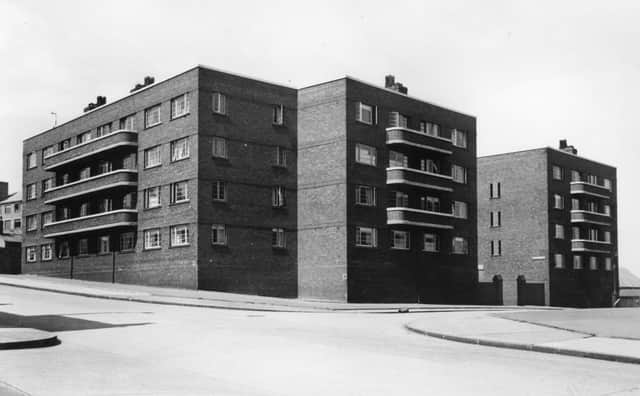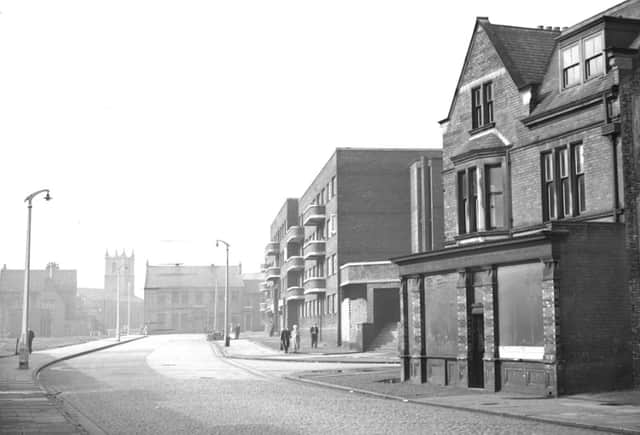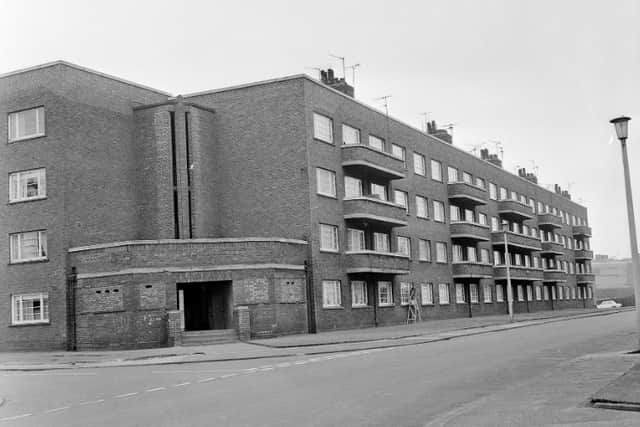The decade when Sunderland's East End Garths made way for new developments
and live on Freeview channel 276
It's 30 years since a campaign to transform a close-knit part of Sunderland was well under way.
The revamp of the East End was a part of the changing face of Wearside in the early 1990s.
The close-knit East End community made an impression
Advertisement
Hide AdAdvertisement
Hide AdAnd when the Sunderland Echo came to report on the development, there was one aspect of it all which struck our reporter.
"At its heart is the families born and bred in the area, " said the story at the time.
"Talk about a close-knit community and you talk about the East End, " said the Echo story.
Many of the area’s tenants were related and some of the families living in the area had four generations of their clan in the neighbourhood.
Burleigh Garth and Covent Garden
Advertisement
Hide AdAdvertisement
Hide AdWear Garth and Walton Garth were coming down but that was only one part of a rolling programme of demolition.
Ageing flats were on the way out and new homes were coming in.
Last in line to come down were Burleigh Garth and Covent Garden although the future of those sites had not been decided at the time.


However, what had been decided was that the project was creating local work for local people.
The transformation work was award winning
Advertisement
Hide AdAdvertisement
Hide AdThere was a partnership between Home Housing, East Training Education and Community, and developers Gleeson which was collectively finding people work.
It won a Government National Training Award and made the top five in another.
It was so successful that 39 local people got work on the scheme and 35 of them got either Level 1 or Level 2 NVQs in a building trade.
Former residents of the Garths were among those to benefit.
When the Garths were showpiece homes
Our report at the time reflected on the era when the Garths first were unveiled to a backdrop of people hanging from balconies waving flags and dressed in carnival outfits.
Advertisement
Hide AdAdvertisement
Hide Ad"Families had moved in from slum areas to what was, at the time, the old town’s showpiece homes.
"Now another kind of showpiece homes are taking place on the same sites."
By the time the project was completed, there would be 240 new homes and 26 refurbished flats.
The changes started in 1993
At the time, the complete transformation of the site was described as the 'largest regeneration programme in Britain by a housing association on its own stock."
Advertisement
Hide AdAdvertisement
Hide AdThe whole project to transform the Garths first began in August 1993 when redevelopment plans were announced.


In September that year, work began on the first of the properties in Trinity Square and by the following June, Spring Garden Close was under the attention of developers.
Demolition work began on St Patrick’s Garth in June 1995, and in May 1996, news homes were being completed on the former St Patrick’s Garth site which became known as St John’s and Donnison Gardens.
The renovation of High and River Garths were completed in June 1996, and by January 1997, demolition work had begun at Wear Garth and Walton Garth.


Advertisement
Hide AdAdvertisement
Hide AdExperts estimated that the completion date for new homes at Wear Garth would be April 1998.
Share your memories of the Sunderland housing areas you used to live in by emailing [email protected]
Comment Guidelines
National World encourages reader discussion on our stories. User feedback, insights and back-and-forth exchanges add a rich layer of context to reporting. Please review our Community Guidelines before commenting.